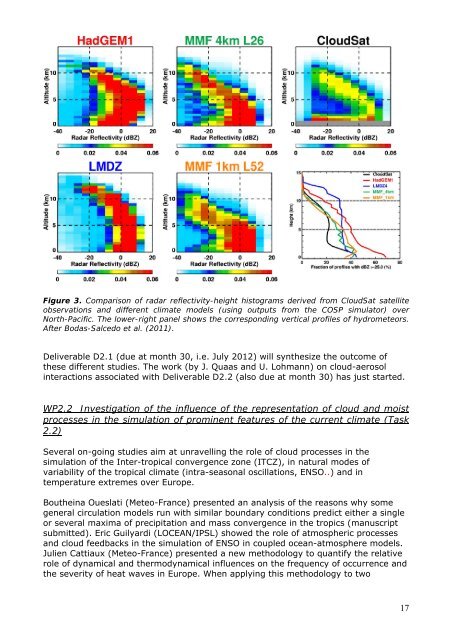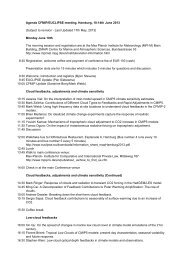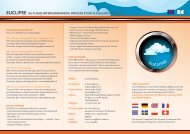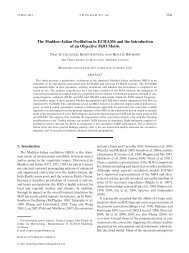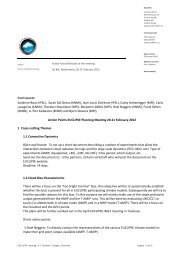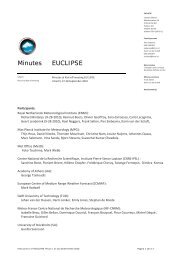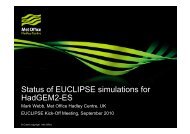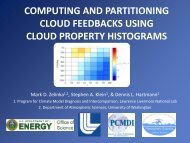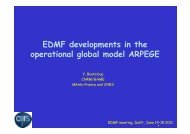EUCLIPSE First Period Report
EUCLIPSE First Period Report
EUCLIPSE First Period Report
Create successful ePaper yourself
Turn your PDF publications into a flip-book with our unique Google optimized e-Paper software.
Figure 3. Comparison of radar reflectivity-height histograms derived from CloudSat satellite<br />
observations and different climate models (using outputs from the COSP simulator) over<br />
North-Pacific. The lower-right panel shows the corresponding vertical profiles of hydrometeors.<br />
After Bodas-Salcedo et al. (2011).<br />
Deliverable D2.1 (due at month 30, i.e. July 2012) will synthesize the outcome of<br />
these different studies. The work (by J. Quaas and U. Lohmann) on cloud-aerosol<br />
interactions associated with Deliverable D2.2 (also due at month 30) has just started.<br />
WP2.2 Investigation of the influence of the representation of cloud and moist<br />
processes in the simulation of prominent features of the current climate (Task<br />
2.2)<br />
Several on-going studies aim at unravelling the role of cloud processes in the<br />
simulation of the Inter-tropical convergence zone (ITCZ), in natural modes of<br />
variability of the tropical climate (intra-seasonal oscillations, ENSO..) and in<br />
temperature extremes over Europe.<br />
Boutheina Oueslati (Meteo-France) presented an analysis of the reasons why some<br />
general circulation models run with similar boundary conditions predict either a single<br />
or several maxima of precipitation and mass convergence in the tropics (manuscript<br />
submitted). Eric Guilyardi (LOCEAN/IPSL) showed the role of atmospheric processes<br />
and cloud feedbacks in the simulation of ENSO in coupled ocean-atmosphere models.<br />
Julien Cattiaux (Meteo-France) presented a new methodology to quantify the relative<br />
role of dynamical and thermodynamical influences on the frequency of occurrence and<br />
the severity of heat waves in Europe. When applying this methodology to two<br />
17


